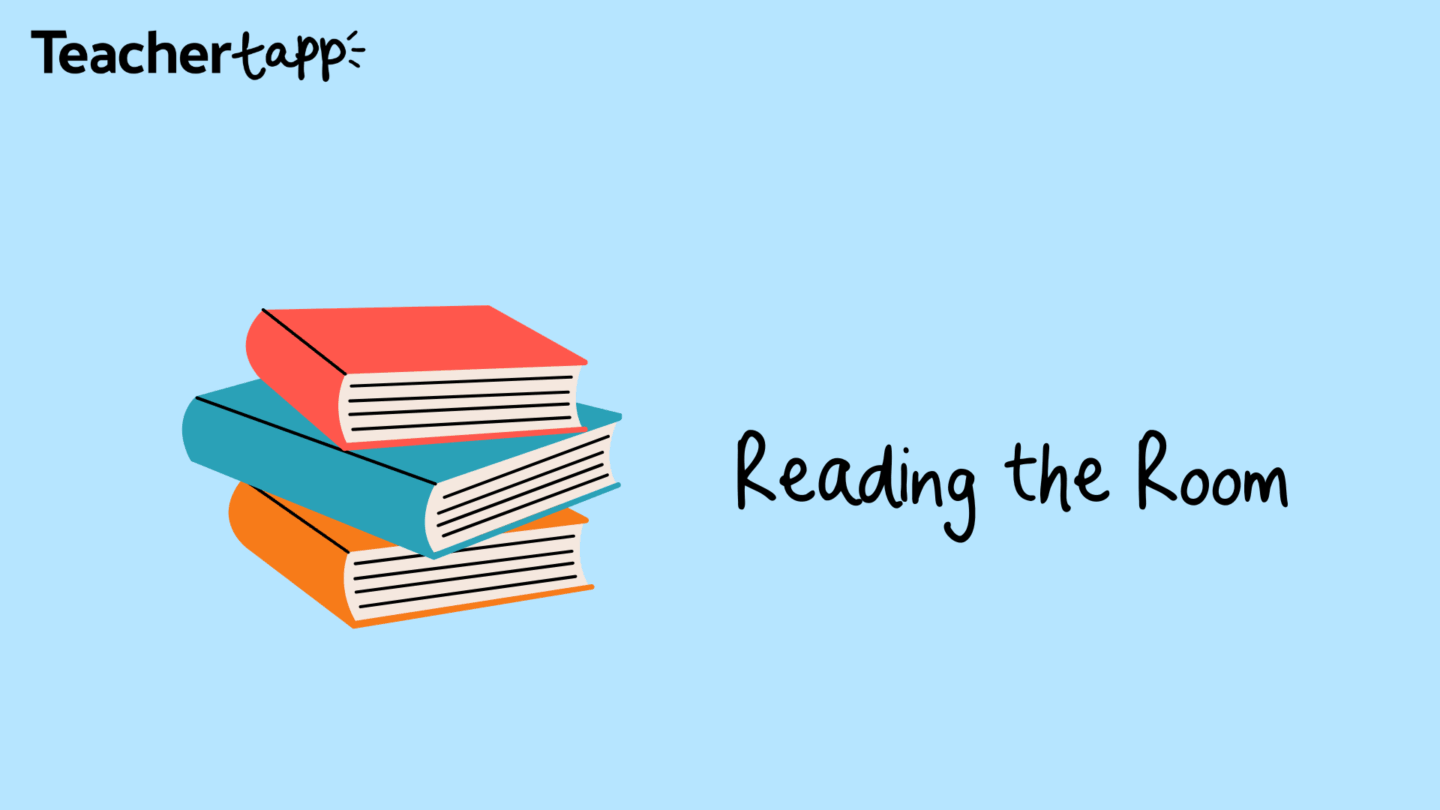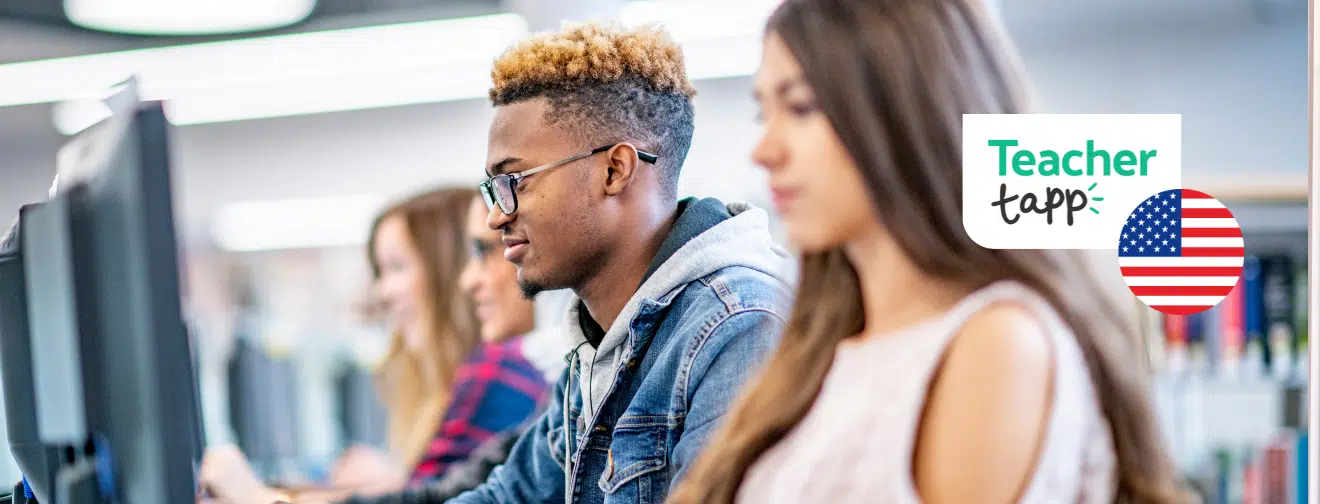
Hey Teacher Tapp Community!
It’s week 26, and that means another amazing round of insights from our ever-growing Teacher Tapp community!
For those of you who’ve been with us a little while now, a reminder that if you answer for 30 days before the end of April, you’ll earn a Starbucks gift card as a little thank-you from us. 🎉
To qualify, you must:
✔️ Be a K-12 teacher currently employed in a US school 🏫
✔️ List your school’s name in your Teacher Tapp profile ✏️
✔️ Be a legal resident of the United States
🔗 Read the full terms and conditions here
Want to make the Teacher Tapp community even stronger? Invite your colleagues to join! The best link to share is onelink.to/teachertapp – it takes them straight to the app store! 📲✨
Now, what did teachers tell us this week? Let’s find out…
1. AI and Tech
How common is it for students to use AI to help with their work? Quite common – according to Teacher Tappers!
Overall, more than a third of teachers (38%) said they have suspected students using AI to help with their school work in the past month. The overall data hides something though, and this question is a great example where splitting by different grades makes the findings much more interesting!
Just 12% of elementary teachers said they have suspected their students to have used AI in the past month, but among middle and high school teachers, that figure is much greater! 57% of high school teachers said they think their students have used AI on multiple occasions in the past month. The same is true for 41% of middle school teachers.
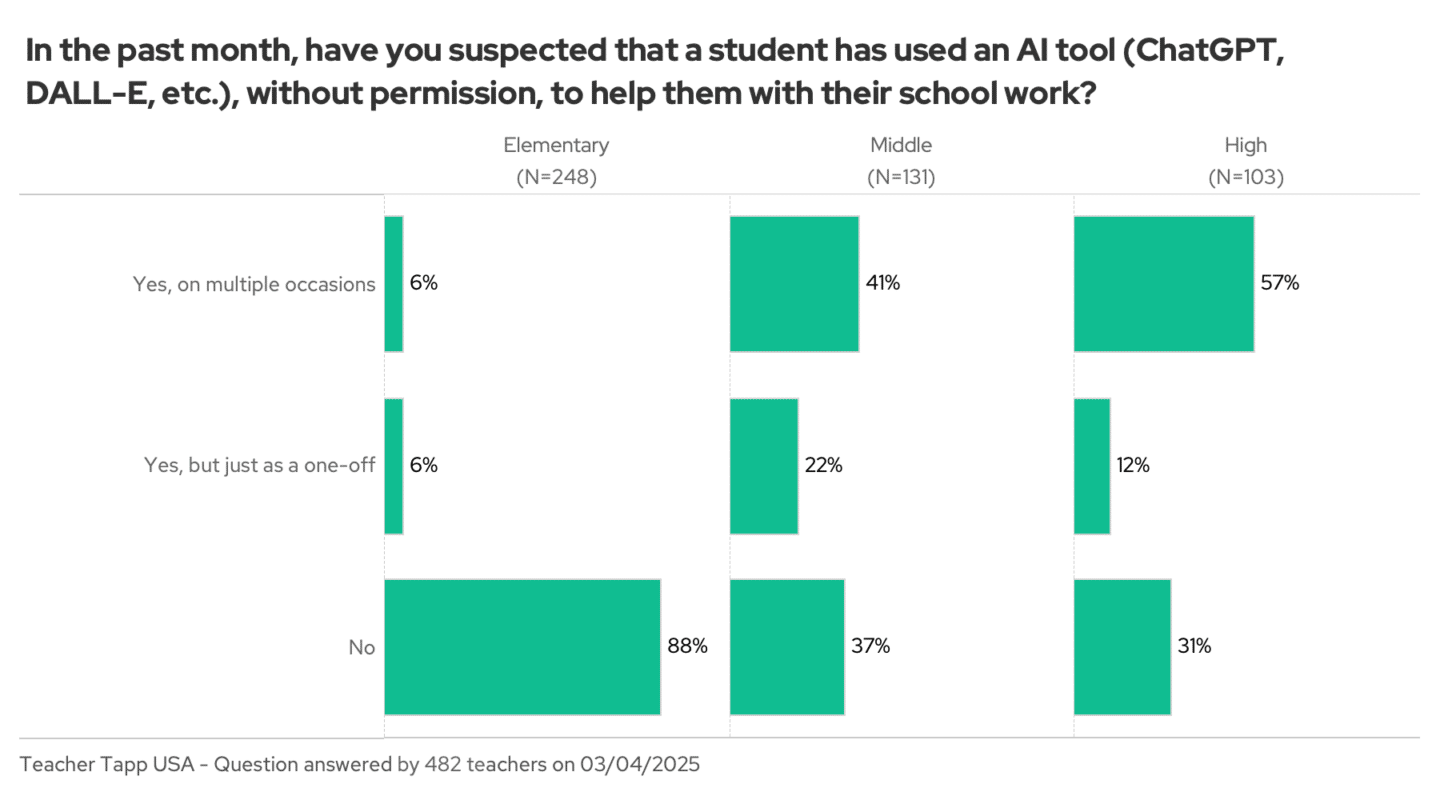
1:1 devices are very common across schools. 87% of elementary teachers say this is true in their school, along with 71% of middle school teachers and 73% of high school teachers.
It’s not often that students are allowed to bring in their own devices – just 6% of elementary school teachers say their students can do this, compared to around one-in-three middle and high school teachers.
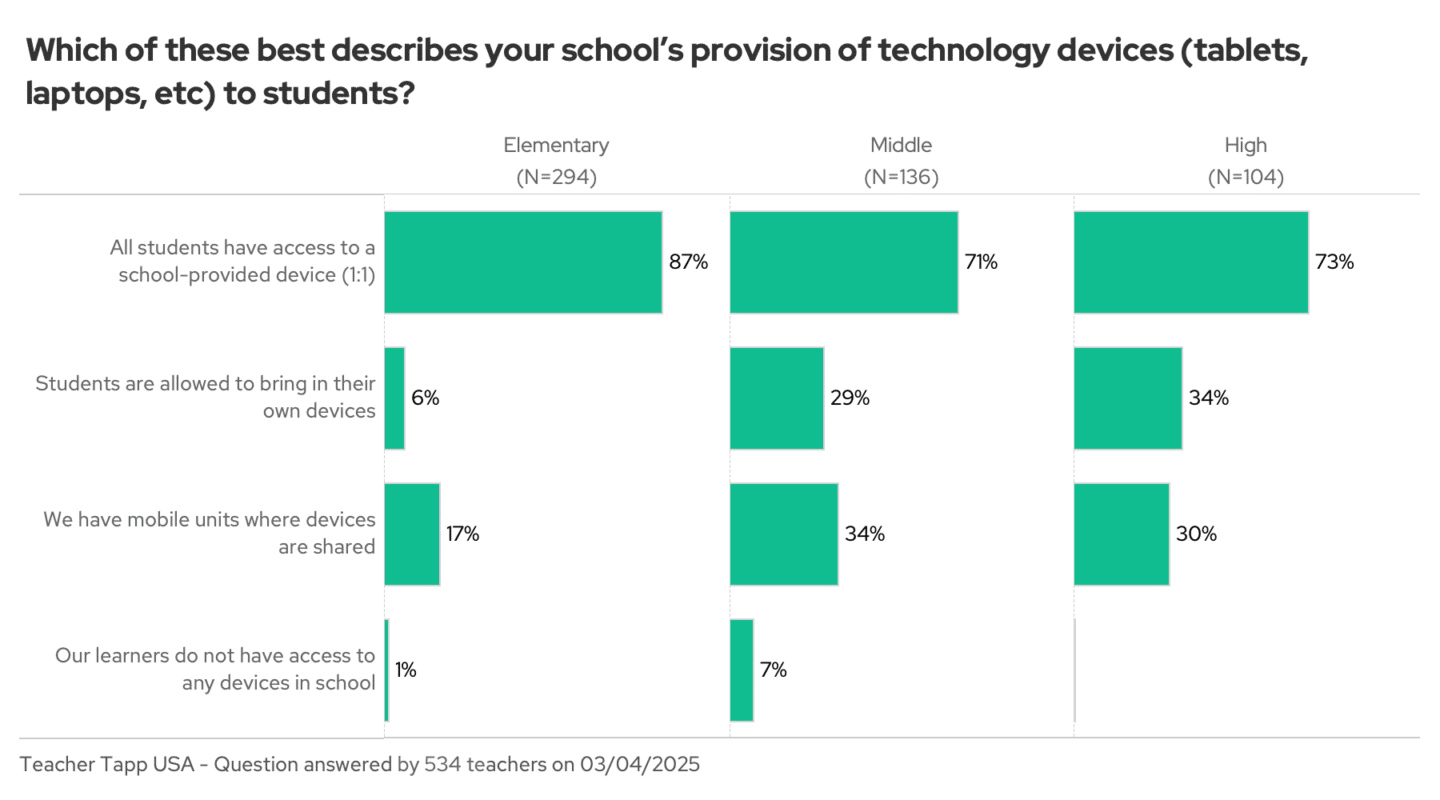
2. Observations and development
55% of teachers say that observations and feedback are helping them to improve their practice. That means, though, that 45% of teachers don’t find this practice useful.
So, how are observations conducted and how can they be made more useful?
Firstly, having clear guidance on what is expected when observing is crucial. However, 14% of elementary teachers and 22% of middle and high school teachers say they have been made to observe without sufficient guidance on what was needed.

Secondly, providing both feedback and the right feedback is important. 10% of teachers say that during their most recent lesson observation, they didn’t get any feedback at all!
More than half of teachers (56%) said the majority of the feedback they received was observational, with just 8% saying it was judgemental.
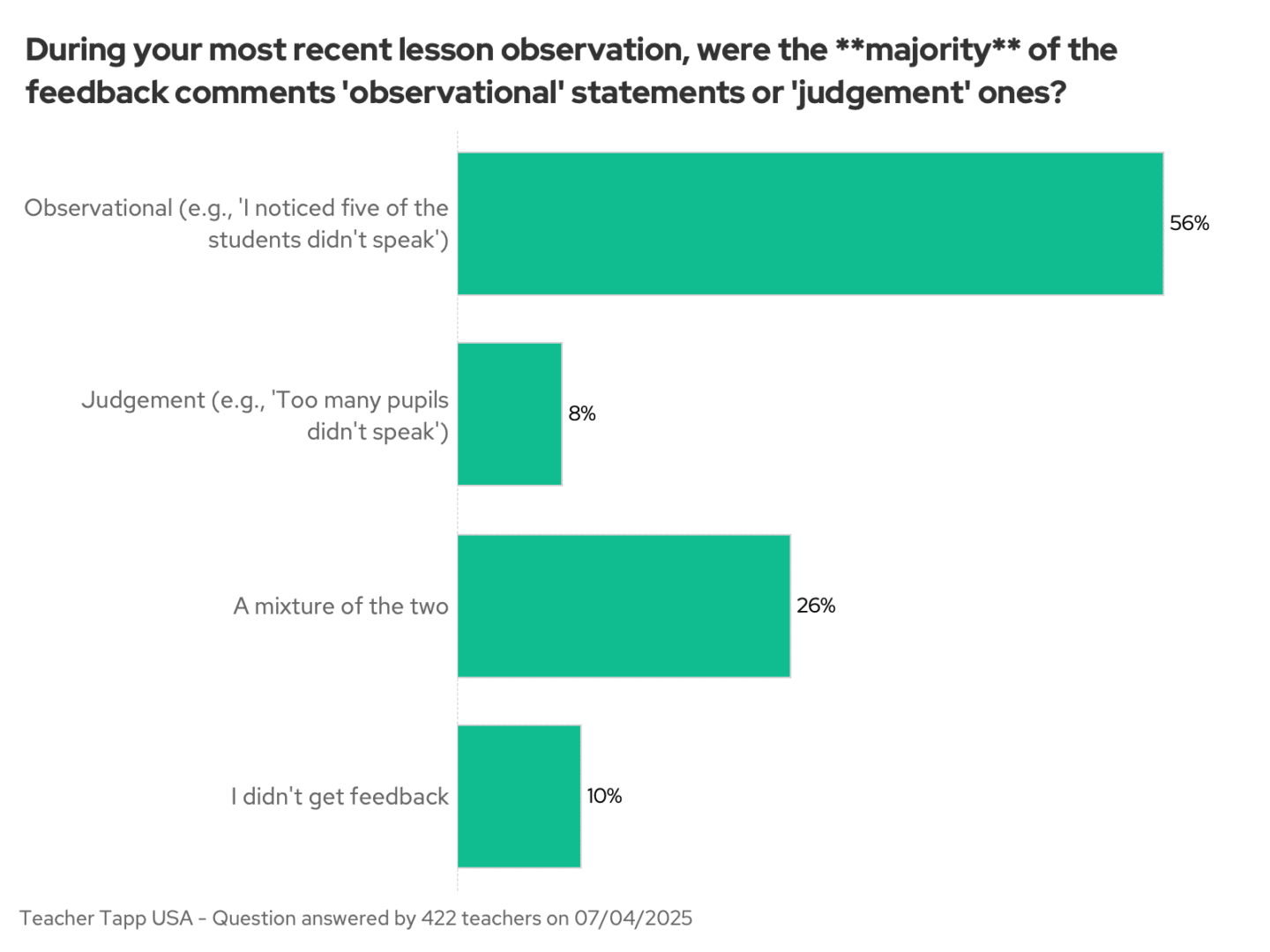
Of course, feedback through observations isn’t the only way teachers get professional development. 90% of teachers have done either an in-person or online workshop or course over the past year. Teachers are readers too, with 51% saying they’ve read some educational literature.
Teachers visiting other schools for observations is less common in the US than in England. In England, 24% of teachers say they had visited another school in the past year, compared to 16% in the US.

3. Behavior
Teacher Tapp has only been running for a few months in the US but it’s already clear that behavior is one of the biggest issues in schools. Many teachers have said they know a colleague who’s left teaching entirely because they found student behavior too difficult to manage.
This is true across both elementary, middle and high schools. In middle and high schools, 46% of teachers say they know several teachers who have left the profession as a result of poor behavior.

This week, we also asked an open-ended question asking teachers what changes they’d make to their school’s discipline policy. The key themes, among other things, were:
- Stricter and More Meaningful Consequences – many teachers wanted to see harsher punishments, that are timely and appropriate to the infraction that occurred.
- Consistency and Fairness – teachers wanted more consistency in expectations and consequences, and say this isn’t happening at the minute.
- Increased Parental Involvement and Accountability – suggestions include mandatory parent conferences for repeat offenders, requiring parents to pick up disruptive children, and even consequences for parents of habitually late students.
- Clearer and More Explicit Policies – many teachers want clear and direct policies, an explicit written plan of infractions and consequences, and a clear hierarchy of consequences, including shared with students and parents at the start of the school year.
Daily Reads
We know lots of teachers on Teacher Tapp LOVE the daily reads! If you have ideas of reads we could feature, get in touch by emailing usa@teachertapp.com and we will check it out!
This week our most-read blog was one on the origins of spring break!
